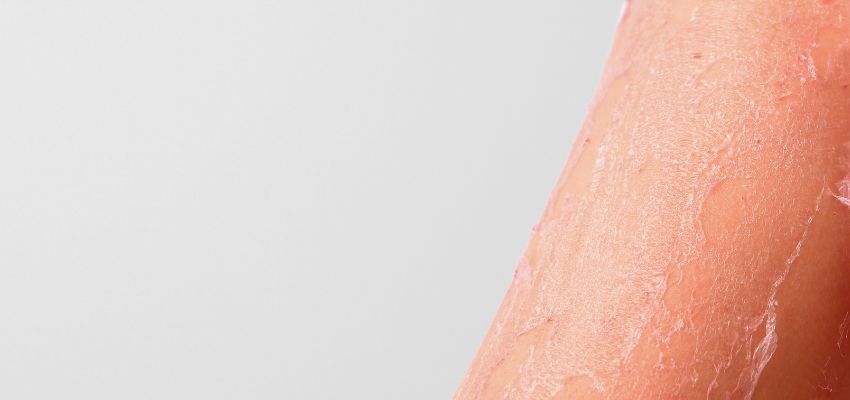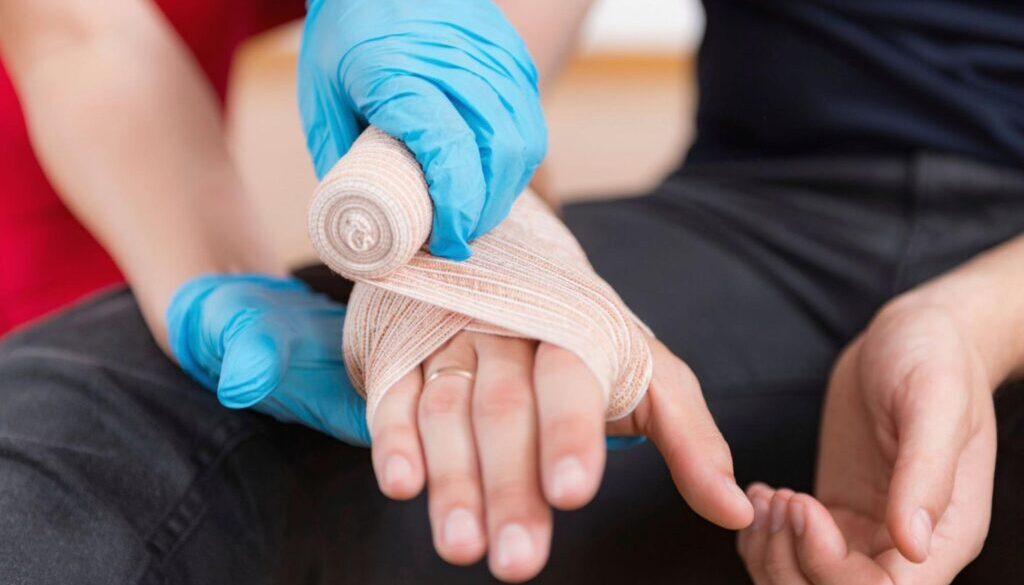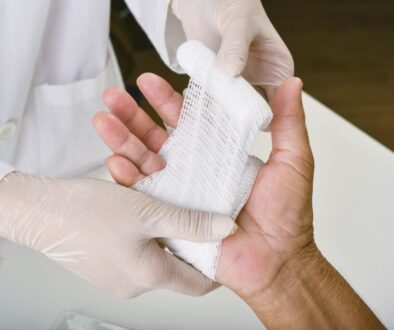Do’s And Don’ts For Proper Burn Wound Healing Care
Did you know improper care can delay wound healing and even lead to serious complications? Burns are painful and can quickly worsen without the proper treatment. Understanding how to care for burns immediately and over time is crucial. Doing so ensures effective burn wound healing and prevents infection or long-term issues such as scarring.
In this article, we’ll explore the steps to manage burns effectively, highlighting key aspects of the burn wound healing process and when professional medical attention is necessary.
Understanding Burn Wounds And The Healing Process
Burns come in many forms and levels of severity, each requiring specific care and treatment. Knowing the nuances of burn injuries is crucial to ensuring proper healing. Here’s an overview of what you should know:
Degrees Of Burns
Burns are categorized by their depth and severity:
- First-degree (superficial). These burns impact only the outermost or external layer of skin, resulting in redness and minimal pain. Healing usually occurs within a few days.
- Second-degree (partial-thickness). Deeper layers of skin are affected, often leading to blisters, significant pain, and potential scarring.
- Third-degree (full-thickness). These burns damage all layers of skin, sometimes extending to underlying tissues, nerves, or muscles. Advanced medical treatment is typically required.
The Body’s Healing Process After A Burn Injury
When a burn occurs, the body begins a complex and carefully coordinated healing process:
- Inflammation. Blood rushes to the injured area, causing redness, warmth, and swelling.
- Tissue regeneration. If the damage isn’t too deep, new skin cells begin to form and repair the area.
- Remodeling and scarring. For deeper burns, healing can result in scar tissue formation as the body rebuilds itself.
Proper care and intervention are essential in severe cases to support optimal healing.
The Importance Of Proper Burn Care
Untreated burns can cause serious complications, such as infections, dehydration, and scarring. Prompt care reduces pain and lowers the risk of long-term damage. It also improves recovery outcomes.
The Do’s Of Burn Wound Healing Care
Proper care practices are key to helping your burn heal quickly and without complications. Here are some essential tips to keep in mind:
Cool The Burn Immediately With Cool Water
Gently run cool (not cold) water over the burn site for 10-20 minutes to lessen the pain and halt the burn’s progression. Avoid utilizing ice, as it can cause further damage to the tissue.
Clean The Area Gently To Prevent Infection
Carefully wash the burn with water and, if necessary, a mild soap to remove dirt or debris. Avoid scrubbing the area, as it irritates the wound and delays healing.
Keep The Burn Moisturized And Covered
Maintaining a moist environment is key to faster healing. Apply a burn ointment or aloe vera lotion. Cover the wound with a sterile, non-fluffy bandage. This helps reduce the risk of infection.
Advanced treatments may be necessary for slow-healing or more severe burns. One highly effective recommendation is amniotic tissue allografts by DonorCure. These promote natural healing, minimize inflammation, and help reduce the risk of scarring.
Apply Antibiotic Ointments As Directed By A Doctor
A doctor may suggest antibiotic ointments for severe burns. Silver sulfadiazine or silver nitrate are often used to stop bacterial growth and aid healing. Always follow medical advice when using these treatments.
Keep Track Of Signs Of Infection And Seek Medical Care
Be vigilant for symptoms of infection, such as increased redness, swelling, pus, foul odor, or persistent pain. A fever is another warning sign. If any of these occur, consult a medical professional promptly.
The Don’ts Of Burn Wound Healing Care
Proper burn care isn’t just about knowing what to do—it’s also about avoiding common mistakes that can hinder the healing process. Here are five key things to avoid:
Never Apply Ice Or Icy Water Directly To The Burn
Cooling the burn is important, but applying ice directly can further damage the tissue and slow the healing process. Stick to cool, running water for relief.
Don’t Pop Blisters
Blisters act as natural barriers, protecting the wound from infection. If a blister breaks on its own, gently clean the area and cover it with a sterile dressing to keep it safe.
Avoid Using Home Remedies Without Medical Guidance
Household remedies like butter, toothpaste, or oils may do more harm than good. Always rely on evidence-based treatments or seek advice from a healthcare professional.
Don’t Reapply Bandages Without Cleaning The Wound
Each time you change the dressing, carefully clean the wound to remove bacteria and reduce the risk of infection. Skipping this step can lead to complications.
Don’t Ignore Severe Burns Or Slow-Healing Wounds
Extensive, deep, or non-healing burns should never be overlooked. Seek medical care right away to prevent severe complications, such as infections or excessive scarring.

Long-Term Burn Management
Recovering from a burn doesn’t end when the wound closes. Long-term care is vital for promoting optimal healing and restoring your skin’s health.
Scar Care And Sun Protection
Burned skin is susceptible to UV light, making sun protection crucial. Once the area has healed, apply SPF 50+ sunscreen or cover it with clothing. Discuss scar treatment options with your doctor. These may include silicone gels or pressure garments. They can help reduce scarring and improve skin appearance.
Nutrition And Hydration For Skin Repair
Proper nutrition plays a key role in tissue regeneration. To support healing, incorporate foods rich in protein, vitamins, and zinc into your diet. Staying hydrated is equally important—drink plenty of water to nourish your skin and aid the recovery process.
When To Consult A Burn Specialist
Some burns need expert care. If you have severe or slow-healing wounds, see a specialist. This is especially important for wounds on the face, hands, feet, or near joints. Consider consulting a burn specialist or dermatologist. These professionals can provide tailored treatments to address specific challenges and enhance recovery.
Following these steps can help your skin heal more effectively and regain its strength and resilience.
Frequently Asked Questions
How long does it take for a burn wound to heal?
The healing time for a burn depends on its severity and size:
- First-degree burns generally recuperate within a few days.
- Second-degree burns may take one to three weeks to fully recover.
- Third-degree burns require professional medical care and can take several months to heal completely.
What are the signs of an infected burn wound?
Common signs of infection include:
- Increased redness and swelling
- Warmth around the wound
- Pus drainage or a foul odor
- Fever or chills
Can I shower with a burn wound?
Yes, but take precautions. Use lukewarm water, avoid scrubbing the wound, and gently pat it dry. Afterward, reapply any prescribed ointments and cover the burn with a clean dressing.
Should I peel off dead skin from a burn?
Do not remove dead skin yourself, as this increases the risk of infection. Allow it to fall off naturally, or consult a healthcare professional for safe removal.
Are amniotic tissue allografts safe and effective for burn wound healing?
Yes. A study shows amniotic membranes can help wounds heal faster. They can speed up epithelial closure, reduce pain, and minimize scarring. DonorCure’s WoundEx® and WoundFix™ are FDA-regulated tissue allografts. Always consult a clinician to see if they’re right for your burn.

Your Path To Proper Burn Wound Healing Starts Here
Proper burn wound healing is vital for optimal recovery and to prevent complications. Whether it’s a mild first-degree burn or a more severe injury, following evidence-based practices is essential for smoother healing. Don’t hesitate to seek medical guidance for significant burns or any concerns. Burn wound healing is a step-by-step process, but with the right care, you can effectively support your skin’s regeneration and recovery.
Proper burn care is key to healing and avoiding complications. Ask your doctor about advanced options like amniotic tissue allografts for severe or slow-healing burns. Visit DonorCure to see how their grafts promote faster recovery and less scarring.
Heal Ulcers, Burns, & Surgery Wounds With Break-Through Amniotic Allograft Treatments
Experience the future of wound care with our advanced amniotic allograft treatments. Say goodbye to slow healing. Our innovative solutions promote faster recovery from pressure wounds, ulcers, burns, and surgical wounds. Trust the power of science for your healing journey. Regain your comfort and health today! See if you are eligible for treatment here.

About The Author
Corinne Grace is a full-time writer living in the Philippines. She has a nursing degree from Riverside College. Her background in nursing informs her perspective, allowing her to weave in themes of health, empathy, and resilience into her work.




